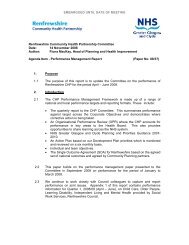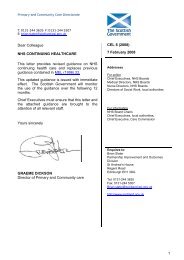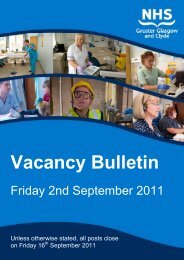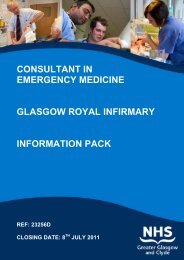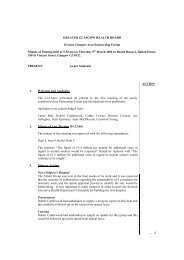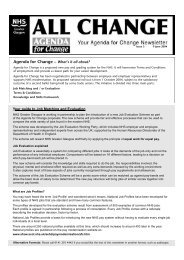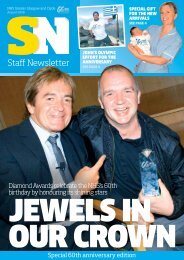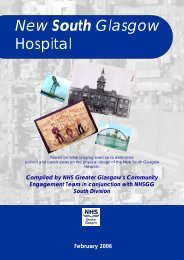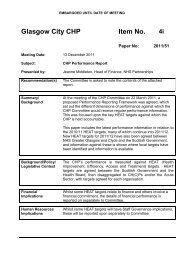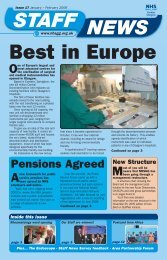NHSGGC Equality Scheme - NHS Greater Glasgow and Clyde
NHSGGC Equality Scheme - NHS Greater Glasgow and Clyde
NHSGGC Equality Scheme - NHS Greater Glasgow and Clyde
You also want an ePaper? Increase the reach of your titles
YUMPU automatically turns print PDFs into web optimized ePapers that Google loves.
Glossary<br />
Race<br />
Religion<br />
Sexism<br />
Sexuality<br />
Sexual Orientation<br />
Social Class<br />
Workforce Profile<br />
A human population considered distinct based on physical<br />
characteristics such as skin colour. This term is often interchanged<br />
with ethnicity.<br />
The term religion - sometimes used interchangeably with faith<br />
or belief system - is commonly defined as belief concerning the<br />
supernatural, sacred, or divine, <strong>and</strong> the moral codes, practices <strong>and</strong><br />
institutions associated with such belief.<br />
A prejudice based on a person’s gender in which one gender is seen<br />
as inferior. Also may be used to describe discrimination on grounds of<br />
gender.<br />
In its broadest sense sexuality describes the whole way a person<br />
goes about expressing themselves as a sexual being. It describes<br />
how important sexual expression is in a person’s life; how they<br />
choose to express that sexuality <strong>and</strong> any preference they may have<br />
towards the type of sexual partner they choose.<br />
Within the sexual orientation regulations, sexual orientation is defined as:<br />
• An orientation towards persons of the same sex (lesbians <strong>and</strong> gay<br />
men)<br />
• An orientation towards persons of the opposite sex (heterosexual)<br />
• An orientation towards persons of the same sex <strong>and</strong> opposite sex<br />
(bisexual)<br />
Social Class refers to the hierarchical arrangements of people in<br />
society based on occupation, wealth <strong>and</strong> income. Higher social<br />
classes have more power <strong>and</strong> status. In Britain class is also<br />
determined by values <strong>and</strong> behaviours such as accent, education <strong>and</strong><br />
family background rather than purely money. The difference in status<br />
between social classes leads to inequalities of resources, including<br />
income, education, work, housing <strong>and</strong> health.<br />
What our workforce looks like. Make up of the people who work for<br />
an organisation. Analysing the workforce profile allows us to see<br />
how many people from different groups work for the organisation,<br />
how many men, how many women, how many disabled people,<br />
how many people from different ethnic groups, how many lesbian<br />
<strong>and</strong> gay people. It also allows us to see what kind of jobs people do,<br />
how much they are paid <strong>and</strong> at what grades to see if there are any<br />
patterns.<br />
45




